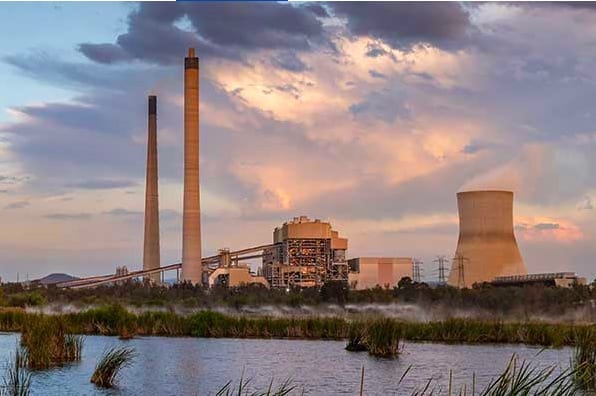The Australian Energy Market Operator has released its initial report into the dramatic explosion at the Callide C coal generator in late May, indicating that multiple fossil fuel generators tripped off after the event, but no evidence was presented of any wind and solar farms doing the same.
The report illustrates how the explosion and fire at the Callide C generator initially had little impact on the grid, until it finally disconnected 22 minutes later, and was quickly followed by the tripping of Callide B, along with another six coal units at the Stanwell and Gladstone generators.
Multiple lines also tripped, as did several gas units. The main interconnector to NSW also tripped, causing a major drop in frequency and triggering “load shedding” (cutting off the power) of more than 2.4GW under the under frequency load shedding (UFLS) scheme, including the Boyne Island smelter.
But there is no evidence of inverter-based technologies, large scale wind and solar, tripping off at the same time, although constraints were automatically placed on many solar and wind farms (dialling them down to zero) because of the multiple line trips and as the market operator sought to “re-build the grid.”
Solar farm owners and operators contacted by RenewEconomy said their plants successful “rode through” the event.
The Callide C explosion occurred at 1334 on May 25, immediately taking out 278MW of capacity in the number 4 unit. Ten minutes later a second Called C unit tripped, taking out another 417MW.
At that stage Callide C was still connected and actually drawing power (some 50MW and a hefty 300MVar) before it disconnected at 1406, tripping the Callide B coal units (367MW) and triggering rapidly cascading events that resulted in more than one million people losing power for up to two hours that afternoon.
Per the AEMO report:
“The exact chronological order of these events will need to be confirmed following careful analysis of high speed data, so the below list may not be in order:
- Callide C4 disconnected from the power system6.
- Callide B2 tripped from around 347 MW.
- All 275 kV lines out of Calvale 275 kV substation tripped at one end only.
- Stanwell Power Station (coal) units 1, 3 and 4 tripped to house load (a total of 1095MW of coal).
- Gladstone Power Station (coal) units 2, 3 and 4 tripped (a total of 705MW of coal).
- Yarwun Power Station (gas) tripped. (115MW)
- Townsville Gas Turbine ramped down to 0 MW. (from 88MW)
- Queensland to New South Wales Interconnector (QNI) flow rapidly increased, peaking at around 1,064 MW, then tripped.
It took nearly 11 hours to get all the tripped coal units “synchronised” and feeding back into the grid, with Gladstone 4 rejoining at around 1am.
The AEMO report is simply a listing of the facts of the events as they have been able to determine so far. It is not sure yet of the exact sequence of events, or the reasons for them, and it can’t give a date on when an updated report will be delivered.
But energy experts are confused and concerned by what happened, particularly by the timing of the outages of the transmission lines and the other coal units.
In one LinkedIn discussion among electrical engineers there was focus on why the multiple transmission lines tripped at the “outer end” – next to the other coal generators, (see map above) rather than at the end close to the original incident. One suggested that meant a fault elsewhere.
And there was focus on the “bizarre” events at Callide C, which was absorbing so much power from the grid when many said it should have disconnected after the explosion, but didn’t.
“50MW of reverse power for 32 minutes must have caused crazy amount of heating and vibrations,” said one engineer in the LinkedIn discussion. “Reverse power protection must have failed to operate, but surprised something else didn’t trip or trigger an alarm to the generator operator.”
Another said:
“50MW would’ve been way above the expected setting for such a unit. Like with every major event, a lot of things had to go wrong on the day to get there and maybe many things gone wrong already prior to the event, hidden gremlins waiting for the holes in the cheese to align.”
And yet another observed: “Well, it didn’t trip. That seems to have been the key problem.”
Or, as another said: “Hell broke loose and we’re concerned about the method they use down there to keep the fire going. Surely 300MVAr for a few minutes is the last of their problems now, when looking at the disaster they’re left with.”
And another: “Brutal outcome for Callide and the NEM. Glad no-one was hurt to be frank – scary stuff.”











